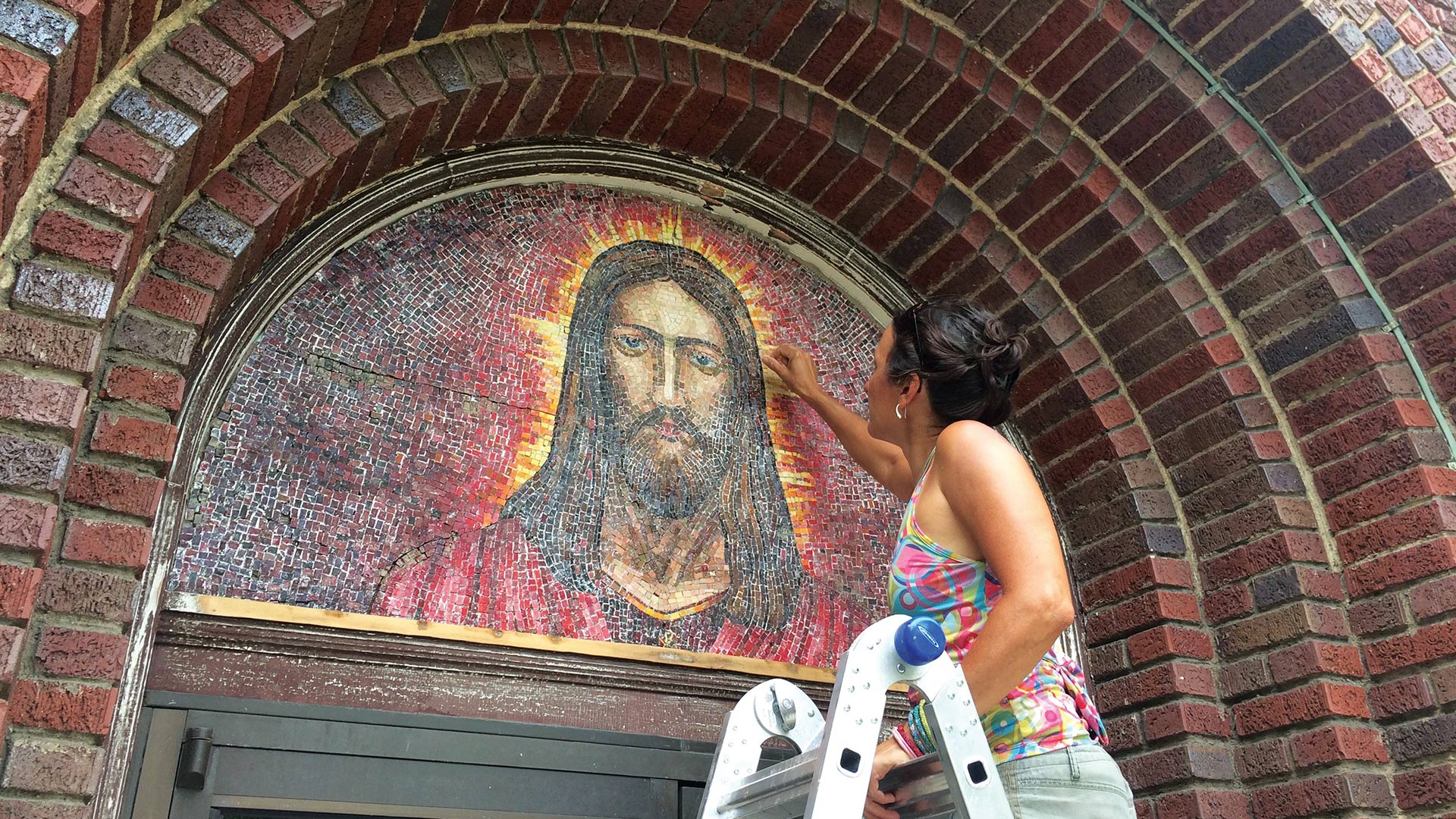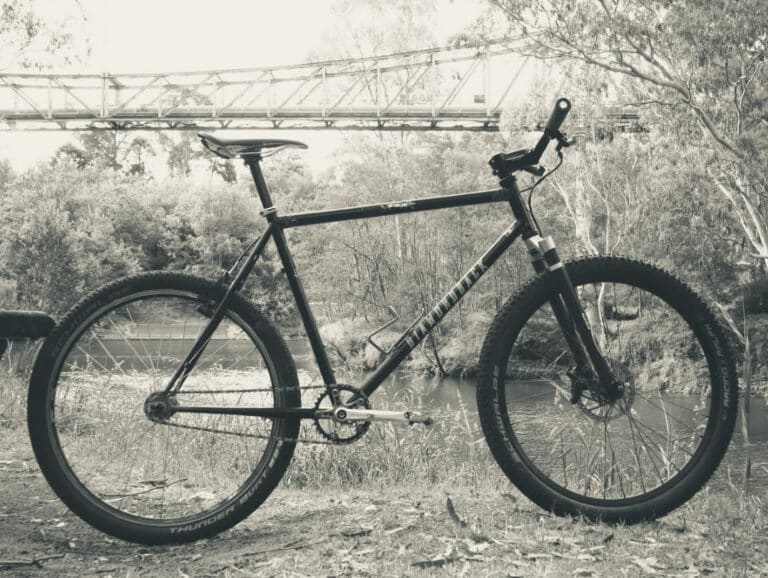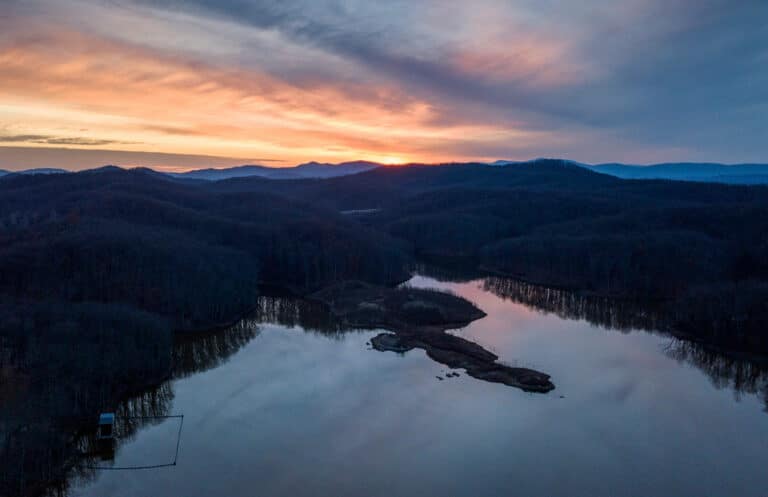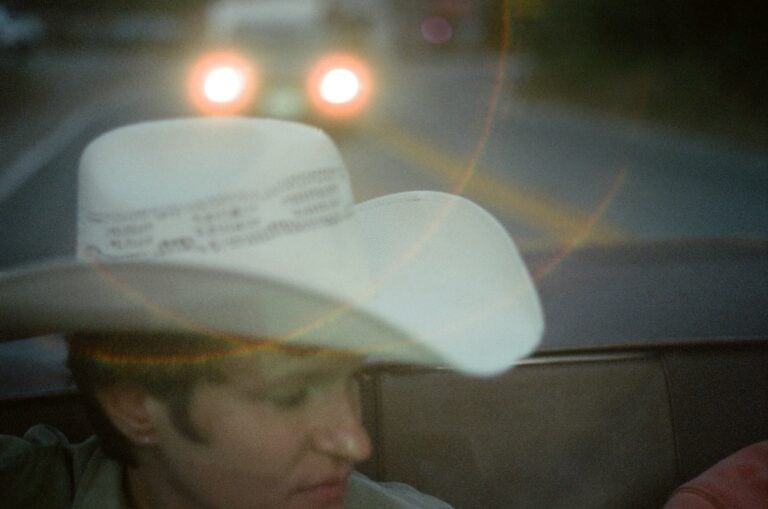Have you ever felt inspired from a postcard-perfect sunset or the final steps to a summit you never thought you’d reach? These 10 regional artist-athletes have. We sat down with them to talk about how adventure nurtures the muse within, and what makes pursuing a creative life the hardest, most rewarding way to live.
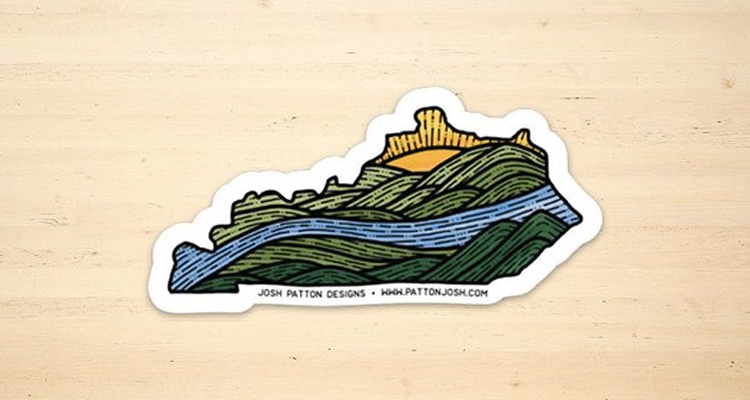
Josh Patton
DESIGNER – RIDER
Campbellsville, Ky.
pattonjosh.com
ON BEING A FULL-TIME FREELANCE CREATIVE
Digital, print, social media. You have to know a little about all of it. In college, I double majored in media studies, with an emphasis in graphic arts, and business management. The program I was in emphasized learning the basics of video and graphic design and HTML and all of that stuff. Coming out of school, it’s important to be well rounded, so you can tackle a position at a newspaper heavy on online publishing or a company that needs communication management and social media. It’s not cut and dry anymore. You gotta blend the lines to be a more dynamic creative.
FOR THE LOVE OF THE RIDE, FROM BMX TO BIKEPACKING
When I was eight I started racing BMX on a national circuit pretty much until I went to college and started racing mountain bikes. I loved it and did really well. From 2010 until 2014 I rode professionally. In 2013 I was the Division 1 Full Slalom National Champion. I raced pro just a couple of years outside of college, but I got burned on racing. It was a lot of stress and a lot of time just to go ride down a mountain for a few minutes and call it a weekend. Bikepacking helped me get back to the roots of why I love mountain biking so much. In March 2017 I bikepacked the Sheltowee Trace Trail in seven days and I plan to do more of those adventure-driven rides in the future.
THE KEY TO A SUCCESSFUL CAREER AS A FREELANCE ARTIST
My network. Hands down, that’s what makes or breaks my career and my ability to do this for a living. Keeping contact with people all across the world, country, state, town, just checking in and posting your work and letting the world know what you’re doing really helps connect the dots. Networking, as hard as it may seem, is everything for a freelancer.
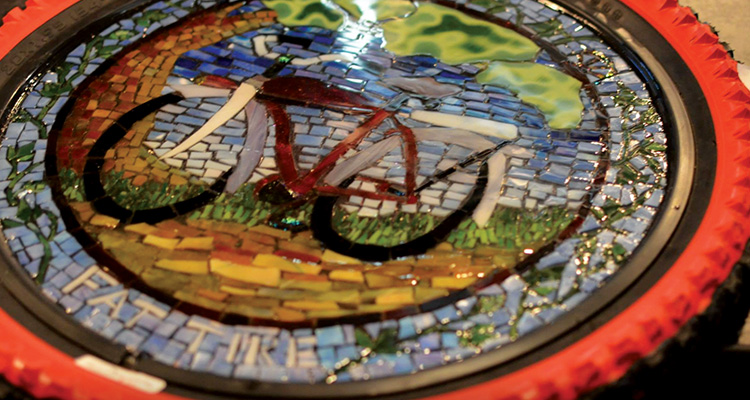
Elizabeth Klevens
GLASS MOSAIC ARTIST – MOUNTAIN BIKER
Pittsburgh, Penn.
elizabethklevens.com
TRANSITIONING FROM COSMETIC CAR REPAIRS TO MOSAIC RESTORATION
I didn’t study music or art in school. I studied physical therapy. I found mosaics later in life. I painted for years, made jewelry, but lots of people paint. Not a lot of people do mosaic work. A friend of mine is a graphic designer who used to illustrate for Dirt Rag. He told me I should do mosaics for a living. From anybody else I wouldn’t have taken that seriously, but coming from him I was like, okay, you’re not just being nice to me. So in 2008 I started doing mosaics full-time. In 2013 I started working on the restoration of a 100-year-old mosaic in the Union Trust Building in Pittsburgh. Those types of jobs are really cool. I’m still working on it.
WHEN YOU MAKE ART FOR A LIVING
You should probably have the ability to not be invested in your art personally. I know a lot of artists have a hard time with that, but in my mind, if you want butterflies on your wall, that might not be what I would put on my wall, but I’ll make them for you. I’ve put pineapples on people’s kitchens and they loved it. Paying the bills is great.
RIDING BIKES SINCE THE DAWN OF MOUNTAIN BIKING
I think I bought my first real mountain bike in 1986. I raced a handful of times. I was never into being the fastest person out there. I used to go down to West Virginia and do the trails in Canaan Valley. The first issue of Dirt Rag was put together in my living room, and I was one of the first subscribers to it. I’ve been involved with them since their inception in 1989. Now I make everybody pizza at Dirt Rag’s events. A lot of the work I do are pieces that have mountain bikes in them. I’ve done backsplashes with bikes in them and signs for places like Over the Bar (OTB) Bicycle Cafe in Pittsburgh, a bicycle-themed bar. I’m working on a trail map mosaic now. I ride about five or six days a week. I could just ride my bike all day, and that’s the tricky part of being self-employed. You get distracted easily. But, you gotta make sure you ride your bike. It’s therapy. If I don’t ride my bike I’m not a nice person.
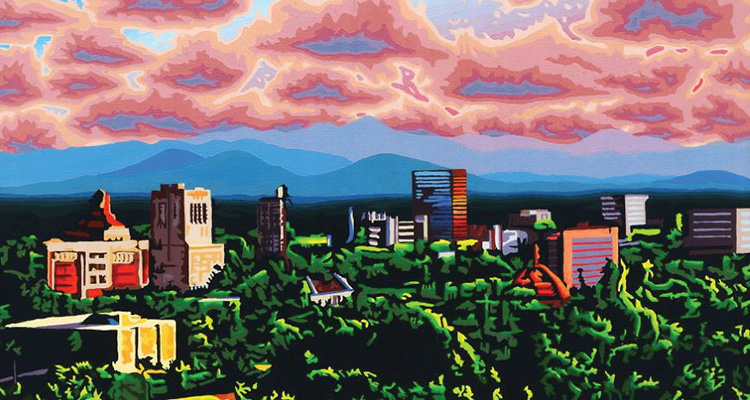
Jonathan Ibach
PAINTER – RUNNER
ASHEVILLE, N.C.
instagram.com/ibachdesign
KINDLED AN INTEREST IN RUNNING
During track in middle and high school, I was really good at pole-vaulting, ironically, which doesn’t involve a whole lot of running. When I went to college at Appalachian State University I almost walked on to the pole-vaulting team but was burnt out on the practice. Then I read Born to Run. I did some of my first runs out in Wyoming and South Dakota during a six-week field camp for my geology degree. That was June or July of 2012. In December of that year I signed up for the Table Rock 50-Miler around the Linville Gorge. It was such a cool experience and the community was so different from that of a road race. I did some 50Ks and last November did my first 100-miler, the Pinhoti 100 in Alabama. I ended up in 12th out of a starting field of 250. What a crazy long experience. I basically started crying when I saw the finish line. Just finally seeing it and realizing I made it, it was such a whirlwind feeling. The day after you’re like, why would I ever do that again, but I’ve already signed up for the Hellbender 100-miler.
PAINTING AND RUNNING, JUST WHAT THE DOCTOR PRESCRIBED
They both allow me to block out stress. When I’m on the trails, I can be gone for two or three hours or more and there’s no need to worry about other stuff, or if I do, my head is in a clear space to do it. The same happens with my art. They’re kinda opposites. One is so active and strenuous at times and the other is so calm, but I’ll do the same when I paint, just lock into my art and only focus on that.
THE HUNT FOR SUBJECTS
The most recent piece I did was a painting of a picture I took during a run up in the Black Mountains. It’s easy to draw inspiration from my runs because that’s what I enjoy the most. To be painting something that’s a pretty landscape, that’s a no brainer.
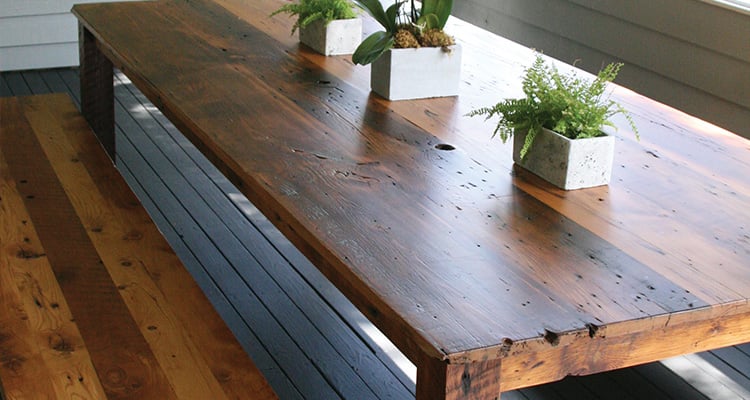
John Petretich
WOODWORKER – PADDLER
FAYETTEVILLE, W.VA.
virgintimberlumber.com
STUMBLED INTO WORKING WITH VIRGIN TIMBER
When I married in 2006 and started nesting, or whatever. Before that I was just a nomadic kayaker, ya know? But then I moved in with my wife and we bought a little house in Fayetteville. It was a repo home and it needed a lot of work. In the process of renovating this house, I was looking for materials and I found a guy selling all of this wood from a house he tore down in Mullins, W.Va. Coal country. I ended up buying the wood and started working with it. It was just incredible, and noticeably different than wood you buy at the store. The wood itself came from virgin trees that were maybe 500 years old. That’s what got me excited about working with this wood. I used to do web design and video boat, but at the end of 2016 I switched over and now do mostly custom furniture.
BEING PRESENT ON THE WATER AND IN LIFE
I graduated with an engineering degree. I thought I was destined to do different things in life, but finding the river and the camaraderie around it put a 90-degree kink in my life and I’m not looking back. I’ve been to Costa Rica, Colorado, Idaho. I’ve done self-support overnight trips on the South Fork of the Salmon and the Grand Canyon. Kayaking teaches you to be in the moment and that’s something I try to do a lot of.
ON REINVENTING THE OLD
One of the things that’s rewarding about woodworking is that I’m creating things that will long outlive me. With web design work, you know, it almost feels like it’s disposable. By the time you’re done making it, it feels almost obsolete. I like making things that will last. I feel like I’m bringing second life to this stuff. I’ve started looking at properties differently here in southern West Virginia. You see all of these dilapidated buildings falling in, but they’re all built out of this special wood, this lost resource. Someday those houses will all be gone but there can be cool furniture pieces that tell their stories and show what virgin timber looks like long into the future.

Chuck Stump
POTTER – PADDLER
FROSTBURG, MD.
THE PURSUIT OF SELF-EXPRESSION
I started surfing when I was 11 during our summers at the beach. I’ve always had a relationship with water. When my wife and I moved to western Maryland, I got into whitewater. Here in Frostburg, we’re 15 miles from 50 world-class rivers. I’ve always been the kind of person who’s wanted to find a way to express myself, whether that’s in a kayak or on a surfboard or in working with silver and clay. I think there’s a lot of similarity between your experiences on the river and being a potter. I’ve paddled the Upper Yough so many times, but every day you go down, it’s a different experience. Even if I make something like a dinnerware set, it’s not intended to look store-bought, where everything is exactly the same size. Each piece is one-of-a-kind because that is the individualized expression of each piece of clay.
FUELING PASSIONS
It’s a nice schedule. I get up in the morning, work in the studio for a few hours, then when it’s hot in the summer and I’m about ready for a break, I can drive 20 minutes to the Upper Yough and paddle that three or four days a week. Now looking back, I can see the colors and the shapes and the textures of the stoneware pottery really reflect the natural environment around me. You can see the striations of clay on the riverbanks and the different types of hardwoods, which I use to fuel the kiln, in the forests. It’s all interrelated. It’s not like I’m making mugs with kayakers on them. It’s more intuitive than that.
TAKEAWAYS FROM A 40-YEAR LABOR OF LOVE
If you want to be a potter, you better get busy. It’s a lot of work being a potter. It’s a lot of physical work, too. I’m 67 now, and it’s been a footrace, 31 years of teaching art in public schools, to get to this point of building my pottery studio up here on Savage Mountain while I still have the physical strength and stamina to do it. The most important thing I have to remember to do is to take what these things give me rather than having an idea of what it should be and then being disappointed by the results. If you get too hard and fast about the imagery of what you want in your mind, you open yourself up to some disappointment, because the kiln has some ideas about what it wants to happen. It’s the same way with the river. If you have an idea about how every drop, every rapid, is going to feel, then I feel like that takes away a lot of the good parts of paddling.

Annie Simcoe
PAPER MAKER – MOUNTAIN BIKER
ACCIDENT, MD.
abphart.com
MADE THE SWITCH FROM GEOLOGY TO ARTISTRY
In 2009. I went to school for geology. Got my master’s degree, worked as a geologist in consulting at the West Virginia Geological Survey and as a researcher at West Virginia University before I went to selling and making paper full-time. One of the first pieces I made was my thesis draft. The papers were layered and stitched together like a crazy quilt. I called it my security blanket. Now I mostly use cornhusks or rye grass, which is my favorite. I grow that as a cover crop in my garden.
EMBRACING VULNERABILITY
Making paper and making a living as an artist has taught me how to be vulnerable and that it’s okay to do things that are scary and out of your comfort zone. With mountain biking, I’ve recently stepped way out of my comfort zone to be an advocate for women in the sport which is weird for me because I rode bikes for 15 years before I ever signed up for a race. You gotta put yourself out there and be true to yourself. It’ll be the biggest reward you’ve ever had.
WHEN ART AND ADVENTURE COLLIDE
I did my first art festival in 2003. I have been mountain biking since the late ‘90s. Until very recently, other than making little bike art pieces here and there, I’ve kept the two worlds completely separate. But these last couple of years, they are now very intermingled. I don’t think my paper making is influencing my mountain biking, but I do more and more bike pieces and I see those worlds overlapping a lot more. I’ve done the awards for races at Big Bear Lake Trail Center and was asked to do the poster for the Canaan Mountain Bike Festival. My artist life and my athletic life have become one and the same.
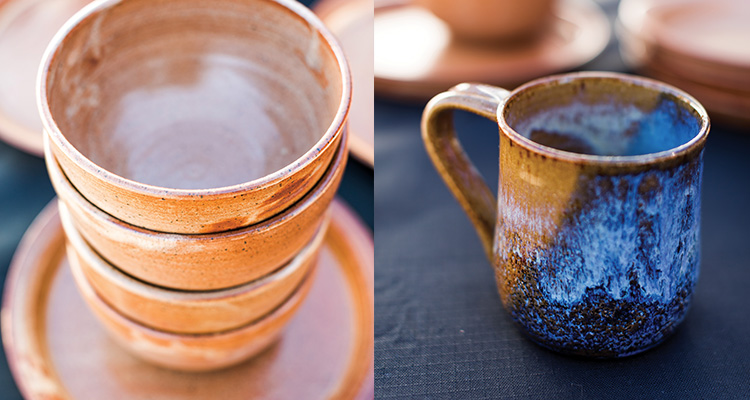
Canyon Woodward
POTTER – RUNNER
FRANKLIN, N.C.
instagram/canyonwoodward
WILL CHOP WOOD FOR POTTERY LESSONS
I first dug my hands into clay in middle school. We had a real good family friend, Doug Hubbs, who is a master potter and who lives nearby. I would help him chop wood in exchange for pottery lessons. My aunt had an old potter’s wheel that she gave me. There’s such a history of pottery in the area, of good clay and master artists. It’s a rich environment in terms of the incredible artists that I’m surrounded by and grew up with as neighbors and friends.
THE IMPORTANCE OF BEING GROUNDED
I think with both running and pottery there’s a really intense connection to the earth for me. I think they definitely feed off of each other. They are both such centering activities. Obviously with pottery you’re right there working with this local clay that comes right out of these mountains, but with running, running is something that makes me feel connected to these mountains and this area in a really powerful way. It’s been so much fun just exploring this whole area that I grew up in by foot and seeing so many more nooks and crannies and different vantage points. It’s hard to grow up in this area and not be drawn out into the mountains.
LIFE IN WESTERN NORTH CAROLINA
The trails and the Forest Service roads and the game paths that go all through these mountains have always had a really strong draw for me. I can see the Appalachian Trail from my mailbox. A little over a year ago, Forest and I went out for a pre-dawn run and just happened across a couple of other haggard looking runners and they asked if we wanted to join them for a little while. Turns out it was Scott Jurek and Karl Meltzer on the last days of Karl breaking Scott’s record. Those are the kind of chance encounters that just happen around here. And that experience was very indicative of the trail running community, with Scott, about to have his record broken, out there on the trail to help pace Karl to do it. I found that community and support for one another really inspiring.
Forest Woodward
PHOTOGRAPHER – DABBLER
FRANKLIN, N.C.
instagram.com/forestwoodward
SCORED HIS FIRST PUBLISHED PHOTO
It was a calendar for Conservation Trust. It was a shot of the Little Tennessee, taken on my second or third roll of film. I was maybe 11 at the time and over the moon to have my first published photo. That’s something it seems I’ve come full circle to in coming back to this area and using cameras to tell stories and help protect the natural beauty of wild areas that are still intact around here. This part of the Southeast is really unique. I think I’ve been to almost 50 countries now, and there’s just something about where you grow up. No matter how far I’ve traveled, I’ve always gravitated back here.
HAVE CAMERA, WILL CLIMB, SURF, HIKE, PADDLE, RIDE, BUT NOT RUN.
Running has been a departure from having a camera always present. In these other sports I photograph, I was always lugging a camera along and it was somewhat manageable, but with running, there’s not much room to have a camera bouncing around. It’s the only sport I do that I haven’t tried to bring the camera in on.
TRY ALWAYS, FAIL OFTEN
We should all strive to fail more often because failing typically means you are pushing yourself out of your comfort zone and trying. If you don’t try then your successes will pale in comparison to what they could be. I remember my first assignment for Climbing Magazine was down in Argentina. Just weeks before I had broken my hand, but my doctor gave me a soft cast so I could climb anyway. I remember I roped in with my broken hand and very minimal knowledge of what I was shooting. The light was wrong, I was on the wrong side of the climber, my shadow was falling on the subject. Looking back there was so much that I just didn’t know. Then I had some luck. A cloud came over and I got the shot that both National Geographic and Patagonia used and that opened the door to relationships with them that are ongoing. That trip ended up being the genesis of a lot of things — my interest in climbing, my first big editorial article, my first trip published with Patagonia. There’s not a road map for being an artist, or if there is, I haven’t found it. What I have found is that my time out in the mountains—climbing, running, paddling—positively influence my creative work both because I’m creating photos while I’m out there but also just being inspired by the places I’m able to get to.
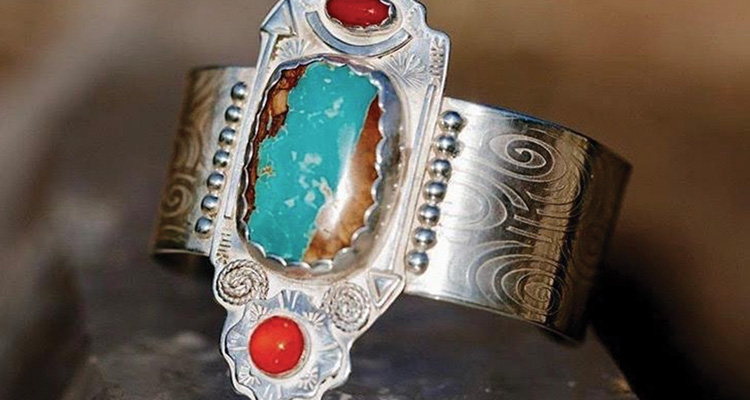
Robert Riffe
JEWELER – BALANCER
Bruceton Mills, W.Va.
mysticalcrystaljewelry.com
BECAME A STUDENT OF STONES AND SILVERSMITHING
20 years ago while I was living in Arizona. I always had an interest in rocks and minerals. I started learning about the metaphysical properties of the stone and that naturally led to learning to cut stones. Two years later I ended up apprenticing with a jeweler, Sean O’Kelly, in Boulder, Colo., and the rest is history.
CONNECTS WITH THE NATURAL WORLD THROUGH
Climbing, slacklining, and snowboarding. Coopers Rock State Forest is the first place I climbed and it’s still right down the road from me. Slacklining is what has held the most interest for me over the past couple of years and it’s been great cross-training for all of the sports I enjoy doing. It’s helped me find balance and focus, and there’s ease to it. The line, you can travel with it and just stop and set it up wherever you are. That in turn creates a community of playing with people along the way and teaching and improving. I find it can really help my mental focus when I’m feeling scattered.
ENJOYS PROCESS OVER PRODUCT IN ART AND ADVENTURE
There’s definitely a crossover between the worlds, and it’s hard to say exactly what that is. With slacklining, snowboarding, and climbing, there’s that flow state you get into where it’s pure movement and I think that feeling is the part that really brings me satisfaction. I enjoy the process of working with metal and stone and starting with raw materials and bringing those into a refined thing, something people can wear and treasure and find some significance and beauty in. The process of creating and movement, sometimes I enjoy that as much as the finished piece. Often I start something with one idea and by the time I finish it, it turns into something else. It’s the evolution of the creative process, and I think that’s what’s similar with outdoor activities. After 20 years of being a working artist, you have to keep it playful.

Julie Wingard
POTTER – PADDLER
FAYETTEVILLE, W.Va.
THE BEAUTY OF BOATING
I started paddling in Pennsylvania on the Youghiogheny River. Then I trained on the Cheat River in West Virginia, paddled the Tygart, the Big Sandy, the New and Gauley. I’ve worked in Colorado on the Arkansas, in California on the Yuba, in Mexico on the Santa Maria and that central region of Mexico in general. I’ve also kayaked in Ecuador and down south here on the Green River and Russell Fork. Paddling really immerses you in that connection to nature, and when you’re paddling hard whitewater, there’s the adrenaline going of course, but then there are the bonds you develop with your fellow kayakers. I haven’t really experienced that depth of a bond in any other sport. When you’re out there paddling hard whitewater, you have a lot of trust in your partners that they’ve got your back and I’m thankful that I’ve had the opportunity to develop such deep friendships.
ON LEARNING POTTERY LATER IN LIFE
I discovered pottery when I moved to Fayetteville back in 2001. There was a resident potter at the Court Street Gallery, which is no longer here, and I sat down at the wheel and took a lesson. I realized this is just something I have to do. I’m also a huge mountain biker so just being connected to dirt and mud was real for me. I still feel like a hobby potter. I’m a videographer for a Summersville television station, and I teach yoga at studios in Beckley and Fayetteville. My pottery just provides supplemental income at this point, and I have a lot of self-doubt about my abilities. It’s been my plight. Pottery has been my biggest teacher in learning to accept compliments from people or accept knowing that I am producing good quality work. I know I want things to be better, which is not a bad trait, but on the flip side of that, I just need to not criticize my work so much so that I can keep going. My own opinions have held me back a little bit, but once I started getting feedback from people outside my community, that somehow validated the fact that I am producing work that people like.
HOMETOWN PRIDE
I live in a town of athletes that are some of the best kayakers in the world. Paddling with them every day on the river and seeing them perform tricks and style the river, it’s so cool. They are my heroes.
